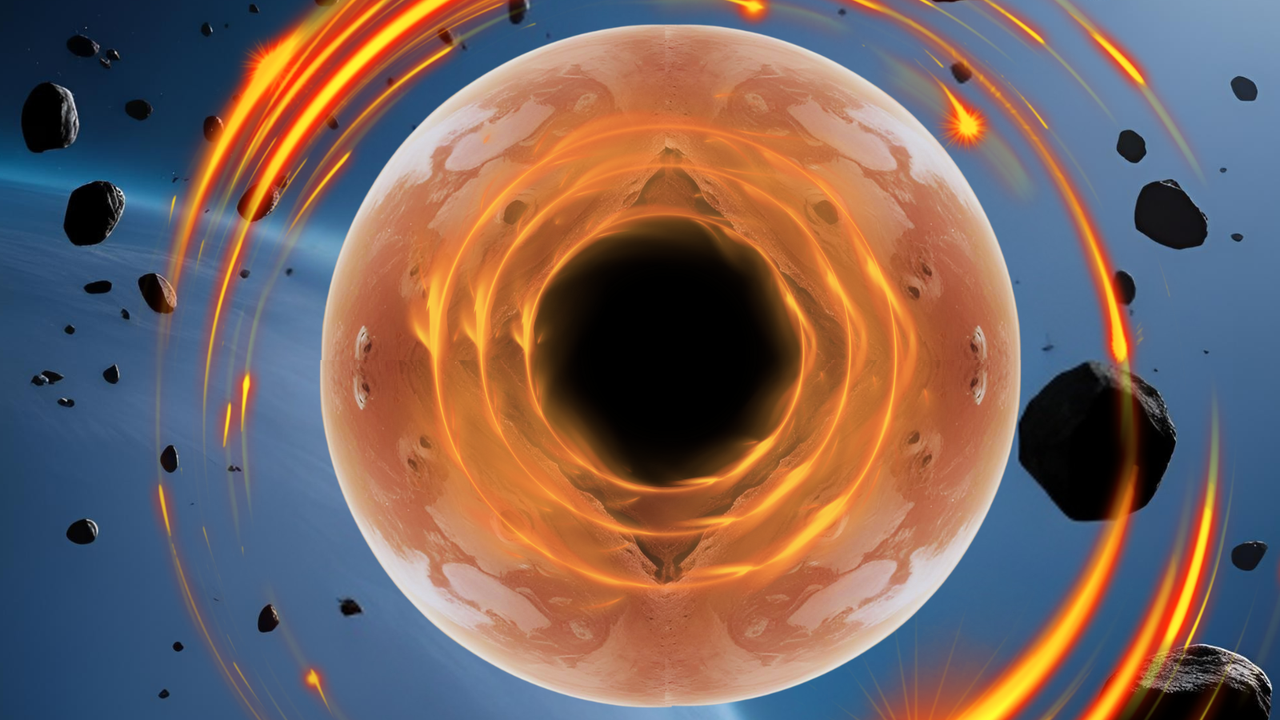Recent research proposes that dark matter might accumulate at the cores of Jupiter-sized exoplanets, potentially forming black holes that could consume these planets from the inside out. This intriguing concept suggests that studies of exoplanets could provide insights into the enigmatic nature of dark matter, which constitutes approximately 85% of the universe’s mass yet remains largely unobserved.
The study, led by researchers at the University of California, Riverside, outlines a model where superheavy dark matter particles become trapped in exoplanets. Over time, these particles lose energy and drift toward the planet’s core. As they accumulate, they may eventually collapse, forming a black hole that consumes its host planet.
However, this model does not apply to all types of black holes. If dark matter particles annihilate each other, as some theories suggest, they would be unable to gather in sufficient quantities to collapse into a black hole. This presents a significant challenge for scientists, as dark matter is difficult to study due to its lack of interaction with light, making it invisible to current observational methods.
The characteristics of dark matter particles are crucial to this hypothesis. The particles must possess substantial mass, which disqualifies widely theorized candidates such as the axion, a hypothetical particle known for its small mass. As Mehrdad Phoroutan Mehr, a co-author of the study, noted, “If the dark matter particles are heavy enough and don’t annihilate, they may eventually collapse into a tiny black hole.”
Mechanisms of Black Hole Formation
The formation of these dark matter black holes differs significantly from stellar mass black holes, which typically form when massive stars exhaust their nuclear fuel and collapse under their gravity. Currently, the lightest confirmed black holes are stellar mass black holes, measuring between 3 and 100 times the mass of the Sun.
The process by which stellar mass black holes form is well understood. After a supernova explosion, the remaining stellar core must have a mass exceeding the Chandrasekhar limit, approximately 1.4 solar masses, to collapse into a black hole. The Tolman–Oppenheimer–Volkoff (TOV) limit further refines this understanding, indicating that a stellar core must exceed 2.2 to 2.9 solar masses to form a black hole.
In contrast, the proposed dark matter black holes would be much smaller, potentially matching the mass of the planets they inhabit. The research indicates that these phenomena could occur in gaseous exoplanets like Jupiter, which is roughly 0.001 times the mass of the Sun. Phoroutan-Mehr stated, “In gaseous exoplanets of various sizes, temperatures, and densities, black holes could form on observable timescales, potentially even generating multiple black holes in a single exoplanet’s lifetime.”
Implications for Dark Matter Research
The possibility of planet-sized black holes offers a new avenue for investigating dark matter. Confirming the existence of such black holes would provide substantial support for the theory that superheavy, non-annihilating dark matter particles exist. Phoroutan-Mehr emphasized the significance of this potential discovery: “If astronomers were to discover a population of planet-sized black holes, it could offer strong evidence in favor of the superheavy non-annihilating dark matter model.”
Additionally, the growing catalog of exoplanets—over 5,000 discovered to date—can serve as crucial tools for studying dark matter. Exoplanets may not only host dark matter black holes but could also display heating effects or high-energy radiation due to dark matter interactions. Current observational instruments may not be sensitive enough to detect such signals, but future telescopes and missions could pave the way for groundbreaking discoveries.
In conclusion, this research, published on August 20, 2023, in the journal Physical Review D, presents an innovative perspective on the relationship between dark matter and black hole formation within exoplanets. As astronomers continue to investigate these distant worlds, the quest to understand dark matter may benefit significantly from the insights gained through exoplanet studies.




































































